Abstract
Inactivation of Cryptosporidium parvum oocysts by ozone was performed in ozone demand-free 0.05 M phosphate buffer (pH 6.9) in bench-scale batch reactors at 7 and 22 degrees C. Ozone was added to each trial from a concentrated stock solution for contact times ranging from 5 to 15 min. The viability of the control and treated oocysts was determined by using in vitro excystation and infection in neonatal CD-1 mice. It was found that excystation consistently underestimated inactivation when compared with animal infectivity (P < or = 0.05). As inactivations increased, the difference between excystation and infectivity also increased. The inactivation kinetics of C. parvum by ozone deviated from the simple first-order Chick-Watson model and was better described by a nonlinear Hom model. The use of the Hom model for predicting inactivation resulted in a family of unique concentration and time values for each inactivation level rather than the simple CT product of the Chick-Watson model.
Full text
PDF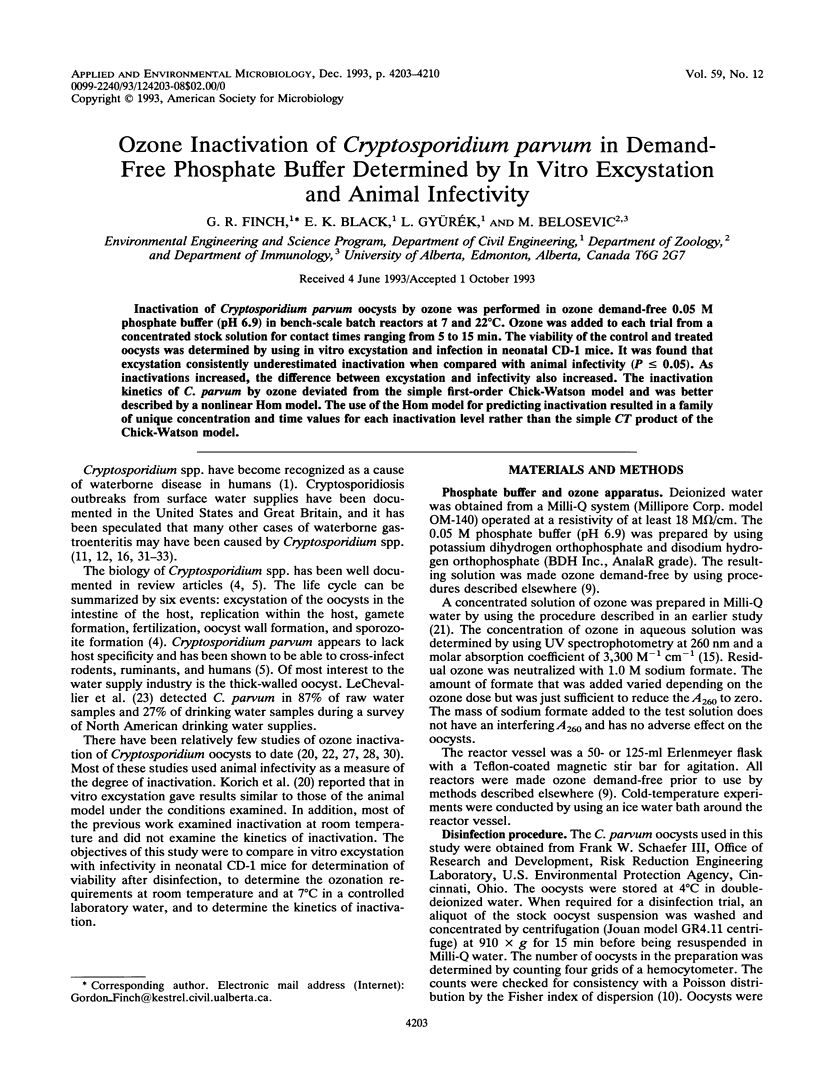
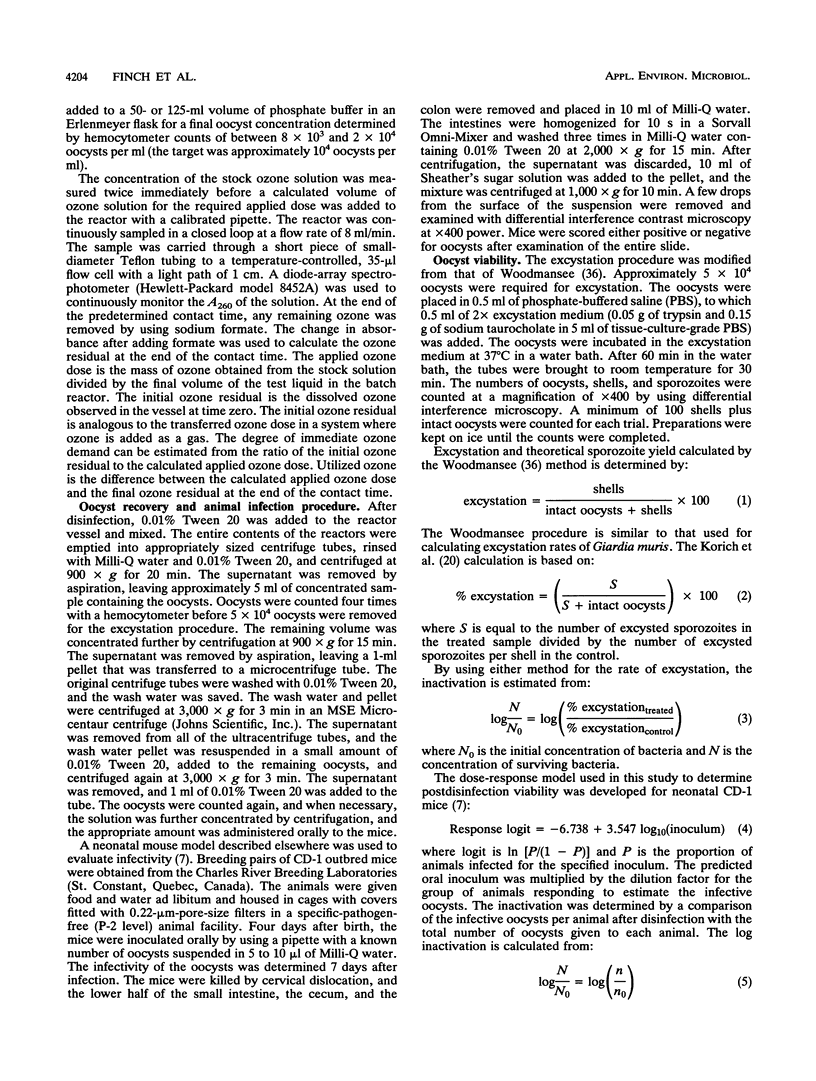
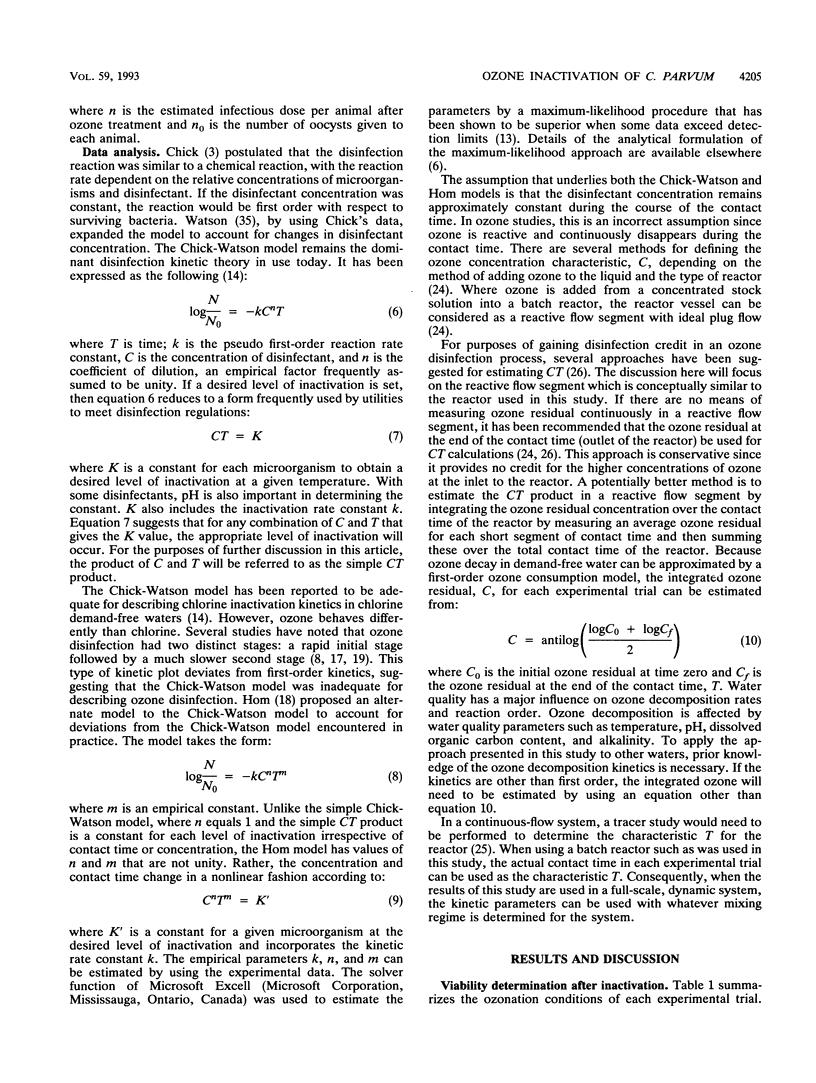
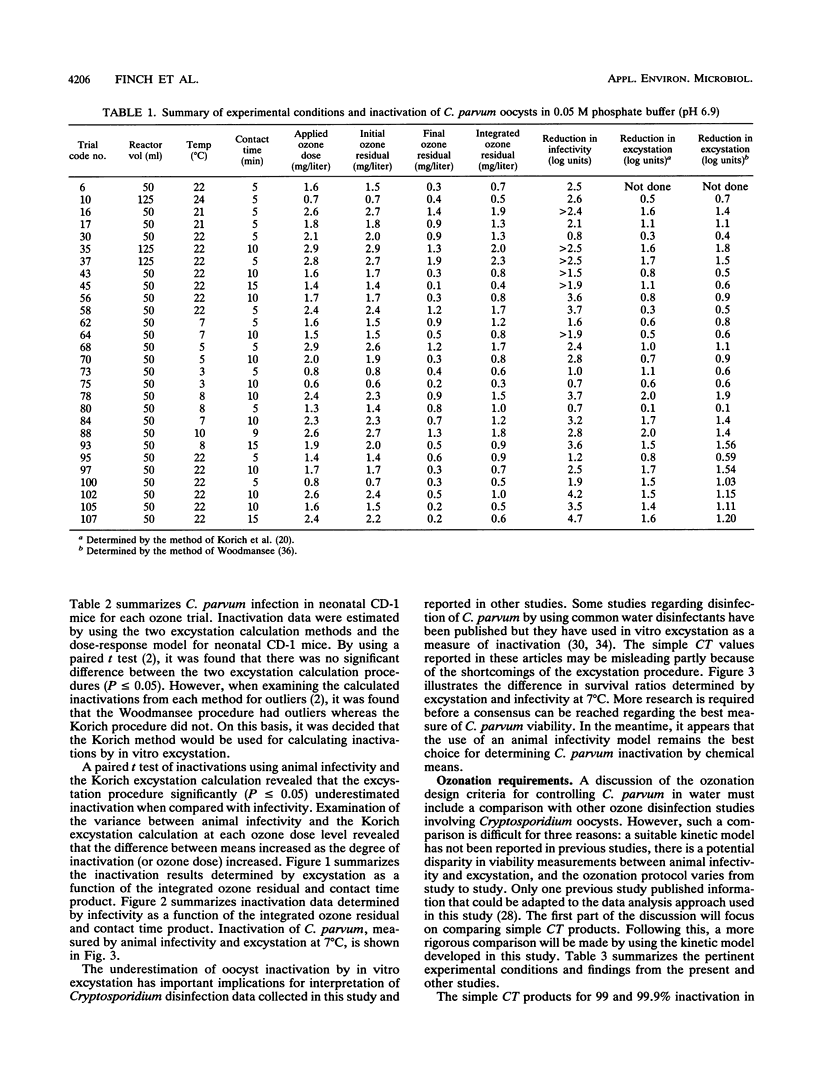
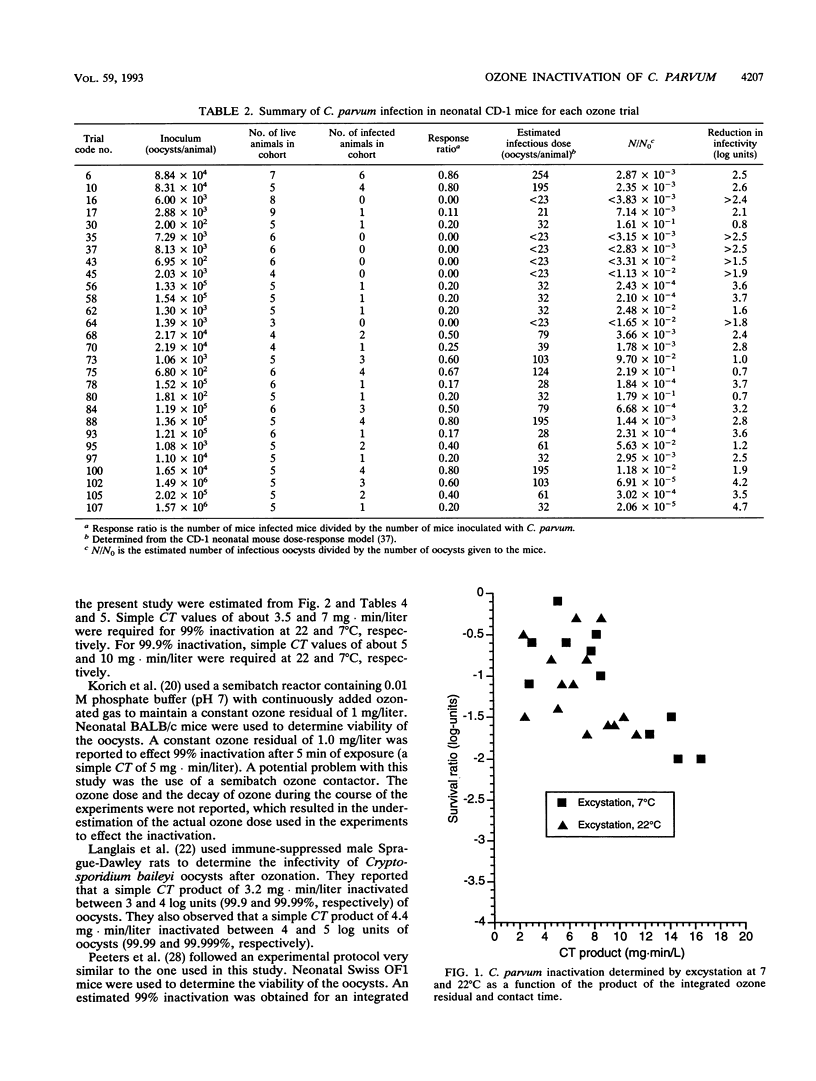
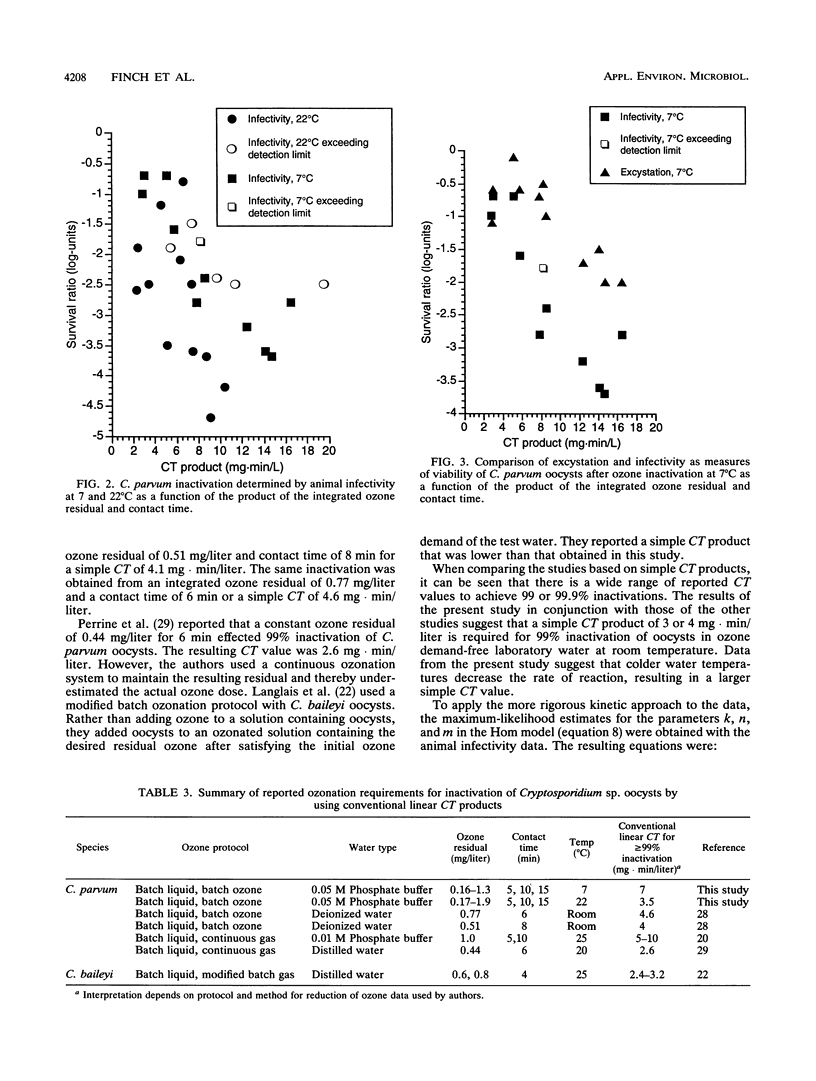
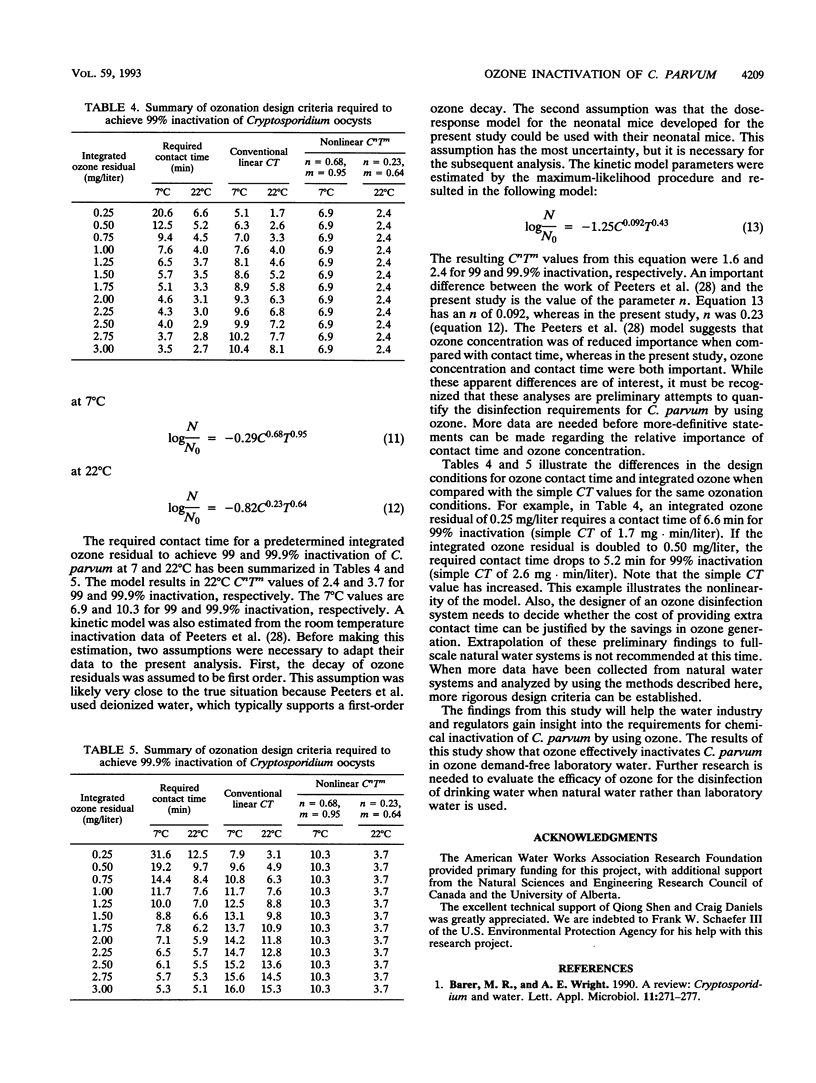
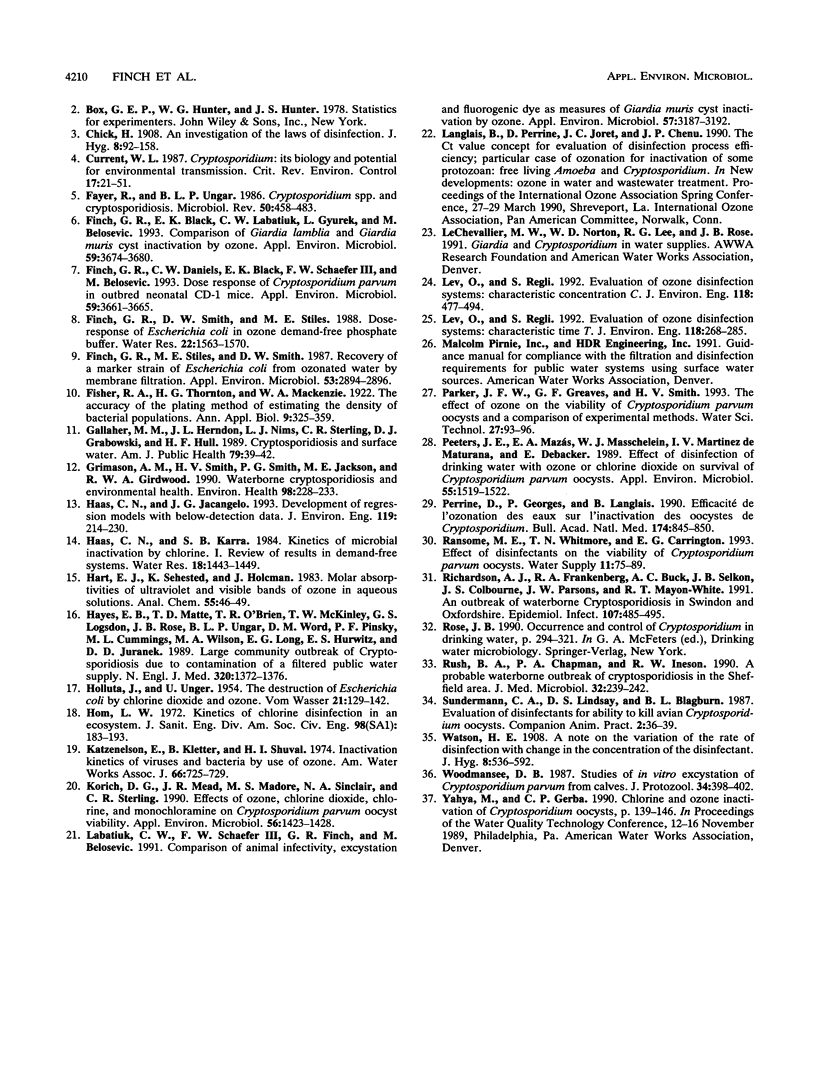
Selected References
These references are in PubMed. This may not be the complete list of references from this article.
- Fayer R., Ungar B. L. Cryptosporidium spp. and cryptosporidiosis. Microbiol Rev. 1986 Dec;50(4):458–483. doi: 10.1128/mr.50.4.458-483.1986. [DOI] [PMC free article] [PubMed] [Google Scholar]
- Finch G. R., Black E. K., Labatiuk C. W., Gyürék L., Belosevic M. Comparison of Giardia lamblia and Giardia muris cyst inactivation by ozone. Appl Environ Microbiol. 1993 Nov;59(11):3674–3680. doi: 10.1128/aem.59.11.3674-3680.1993. [DOI] [PMC free article] [PubMed] [Google Scholar]
- Finch G. R., Daniels C. W., Black E. K., Schaefer F. W., 3rd, Belosevic M. Dose response of Cryptosporidium parvum in outbred neonatal CD-1 mice. Appl Environ Microbiol. 1993 Nov;59(11):3661–3665. doi: 10.1128/aem.59.11.3661-3665.1993. [DOI] [PMC free article] [PubMed] [Google Scholar]
- Finch G. R., Stiles M. E., Smith D. W. Recovery of a marker strain of Escherichia coli from ozonated water by membrane filtration. Appl Environ Microbiol. 1987 Dec;53(12):2894–2896. doi: 10.1128/aem.53.12.2894-2896.1987. [DOI] [PMC free article] [PubMed] [Google Scholar]
- Gallaher M. M., Herndon J. L., Nims L. J., Sterling C. R., Grabowski D. J., Hull H. F. Cryptosporidiosis and surface water. Am J Public Health. 1989 Jan;79(1):39–42. doi: 10.2105/ajph.79.1.39. [DOI] [PMC free article] [PubMed] [Google Scholar]
- Hayes E. B., Matte T. D., O'Brien T. R., McKinley T. W., Logsdon G. S., Rose J. B., Ungar B. L., Word D. M., Pinsky P. F., Cummings M. L. Large community outbreak of cryptosporidiosis due to contamination of a filtered public water supply. N Engl J Med. 1989 May 25;320(21):1372–1376. doi: 10.1056/NEJM198905253202103. [DOI] [PubMed] [Google Scholar]
- Korich D. G., Mead J. R., Madore M. S., Sinclair N. A., Sterling C. R. Effects of ozone, chlorine dioxide, chlorine, and monochloramine on Cryptosporidium parvum oocyst viability. Appl Environ Microbiol. 1990 May;56(5):1423–1428. doi: 10.1128/aem.56.5.1423-1428.1990. [DOI] [PMC free article] [PubMed] [Google Scholar]
- Labatiuk C. W., Schaefer F. W., 3rd, Finch G. R., Belosevic M. Comparison of animal infectivity, excystation, and fluorogenic dye as measures of Giardia muris cyst inactivation by ozone. Appl Environ Microbiol. 1991 Nov;57(11):3187–3192. doi: 10.1128/aem.57.11.3187-3192.1991. [DOI] [PMC free article] [PubMed] [Google Scholar]
- Peeters J. E., Mazás E. A., Masschelein W. J., Villacorta Martiez de Maturana I., Debacker E. Effect of disinfection of drinking water with ozone or chlorine dioxide on survival of Cryptosporidium parvum oocysts. Appl Environ Microbiol. 1989 Jun;55(6):1519–1522. doi: 10.1128/aem.55.6.1519-1522.1989. [DOI] [PMC free article] [PubMed] [Google Scholar]
- Perrine D., Georges P., Langlais B. Efficacité de l'ozonation des eaux sur l'inactivation des oocystes de Cryptosporidium. Bull Acad Natl Med. 1990 Jun-Jul;174(6):845–851. [PubMed] [Google Scholar]
- Richardson A. J., Frankenberg R. A., Buck A. C., Selkon J. B., Colbourne J. S., Parsons J. W., Mayon-White R. T. An outbreak of waterborne cryptosporidiosis in Swindon and Oxfordshire. Epidemiol Infect. 1991 Dec;107(3):485–495. doi: 10.1017/s0950268800049189. [DOI] [PMC free article] [PubMed] [Google Scholar]
- Rush B. A., Chapman P. A., Ineson R. W. A probable waterborne outbreak of cryptosporidiosis in the Sheffield area. J Med Microbiol. 1990 Aug;32(4):239–242. doi: 10.1099/00222615-32-4-239. [DOI] [PubMed] [Google Scholar]
- Woodmansee D. B. Studies of in vitro excystation of Cryptosporidium parvum from calves. J Protozool. 1987 Nov;34(4):398–402. doi: 10.1111/j.1550-7408.1987.tb03199.x. [DOI] [PubMed] [Google Scholar]


